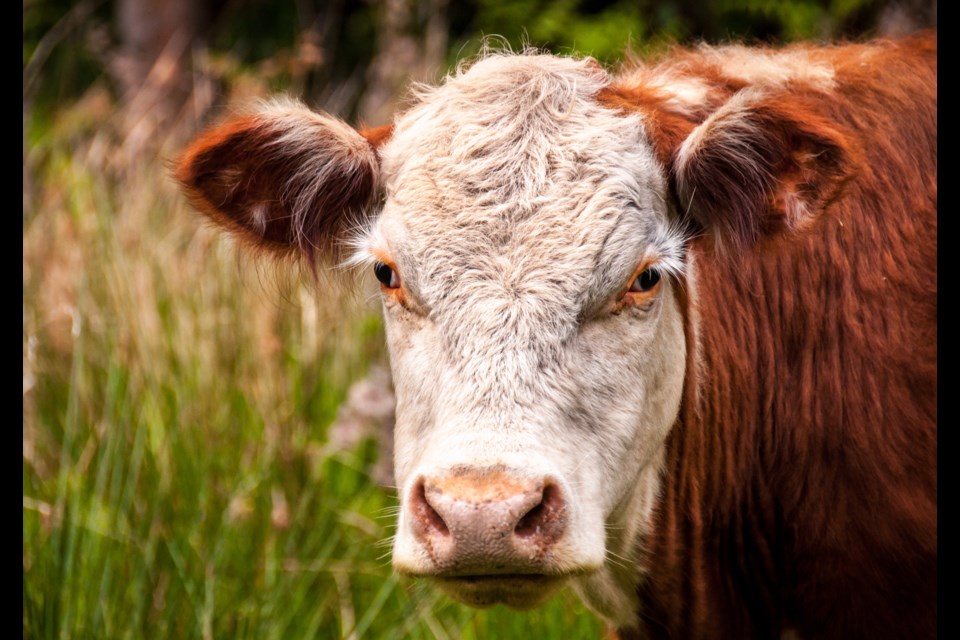It’s been three years since Northern Ontario food producers have gathered in person for the annual Northern Ontario Ag Conference. But last week in Sudbury, as they convened for two days of learning and networking, they got some welcome news right out of the gate.
Northern Ontario’s ag industry has stayed strong over the last decade, and continues to flourish, according to Ben Lefort, a senior policy analyst with the Ontario Federation of Agriculture.
In the last 10 years, the number of farms in the North has expanded to 2,261 from 1,782, and the amount of revenue they’re generating has grown, too.
In 2012, northern farms were generating about $160 million, but by 2021, that number had increased to $230 million.
“It’s very significant,” said Lefort, in presenting to a full house on day one of the conference, being held Feb. 15-16 at the Holiday Inn.
With the theme “Cultivating Connections and Celebrating Sustainability,” this year’s event is aiming to encourage more collaboration amongst participants in an effort to strengthen the industry, noted Emily Seed, executive director of the Northern Ontario Farm Innovation Alliance (NOFIA).
The non-profit organization strives to advance agriculture across the North through various research and innovation projects.
“We hope that, over the next two days, when we take a look at the current research happening in Northern Ontario and hear from producers sharing their stories and their real-life experiences, that we’re able to open up that conversation and have a deeper look into the meaning of sustainability in Northern Ontario’s agriculture industry,” Seed said.
The North’s main commodities are dairy, worth about $61 million in revenue, and cattle, which generates about $36 million in revenue, according to 2021 numbers presented by Lefort.
By district, Timiskaming generates the most at $66 million, followed by Thunder Bay at $30 million, with Rainy River rounding out the top three, also with $30 million.
As with any industry, there have been bad years: cattle and dairy prices dipped in 2016 to 2018 and the Northern Ontario industry saw a corresponding “flattening” in that same period.
But, in general, Lefort said, northern farms are becoming more productive.
In 2011, the average farm produced about $174 per acre; by 2021, that number had jumped to $335 per acre.
“That is a very significant number showing the productivity of farming in Northern Ontario increasing significantly over a fairly short amount of time,” Lefort said.
“So you’ve almost doubled the amount of revenue per acre over that 10-year period, which is quite significant growth.”
Part of that can be attributed to the increase in field crops, he noted, particularly corn and soybeans.
Cash generated from corn production is up 457 per cent over the last decade, while soybeans are up more than 300 per cent over the same period.
“These still remain relatively small, relative to your dairy production and cattle,” Lefort said, “but in terms of the growth in Northern Ontario, that’s played a significant role, the ability to produce these crops in greater numbers over the past 10 years.”
Before crops can be produced, land must be cleared and drainage tile has to be installed — both expensive endeavours for the average farmer, but even more so in Northern Ontario, Lefort noted.
These activities have been made more affordable for producers through the efforts of the Northern Ontario Heritage Fund (NOHFC), which has provided funding for eligible producers to cover some of those costs.
Under the NOHFC’s Invest North program, applicants can receive funding for up to 50 per cent of the cost for tile drainage to a maximum of $500 per acre, as well as funds to cover project management fees. However, funding is no longer available for land clearing.
Lefort said this program has played a “huge role” in getting more acres into production in the North.
Across the North, Rainy River was the top-producing district for corn and soybeans.
Between 2016 and 2021, the number of acres of field crops planted in the district increased by 4,808. During that same time, 9,659 acres received funding through the NOHFC for land clearing and tile drainage.
As a result, the numbers of acres of corn increased by 123 per cent, while the numbers of acres of soybeans increased by 120 per cent, Lefort said.
Overall, farming in Northern Ontario contributed $522 million to the provincial gross domestic product (GDP) and supported 7,835 jobs, he added.
“So, quite a significant contribution, and one that we hope to continue to see grow.”
Timiskaming was the top producer, generating $144 million in GDP for the province, and supporting more than 2,000 jobs. Thunder Bay and Rainy River round out the top three districts.
That factors in not just the farm-generated commodities, but the related activity around food production, such as transportation, processing, marketing, and selling, Lefort said.
“Farm revenue is one thing, but once it leaves the farm, there’s a whole lot of other additional economic activity that takes place by the time it’s sitting on our plates.”
As with other industries, agriculture in the North and across the province is threatened by inflation, higher interest rates, tightening credit, and geopolitical tensions and trade issues, Lefort said.
To combat these risks, Lefort said, the OFA will continue to lobby the provincial and federal governments on a number of issues.
Farmers need better access to veterinarians, which are in short supply, and continued investment in infrastructure like natural gas and broadband.
But for the North, continuing to fund land clearing and tile drainage should remain a top priority if the province wants to see additional growth in the sector, Lefort said.
“That continued access to funding to clear land and tile drain land to get more acres in production and make those acres more productive is going to play a huge role in helping Northern Ontario continue to grow and diversify as a regional sector.”
